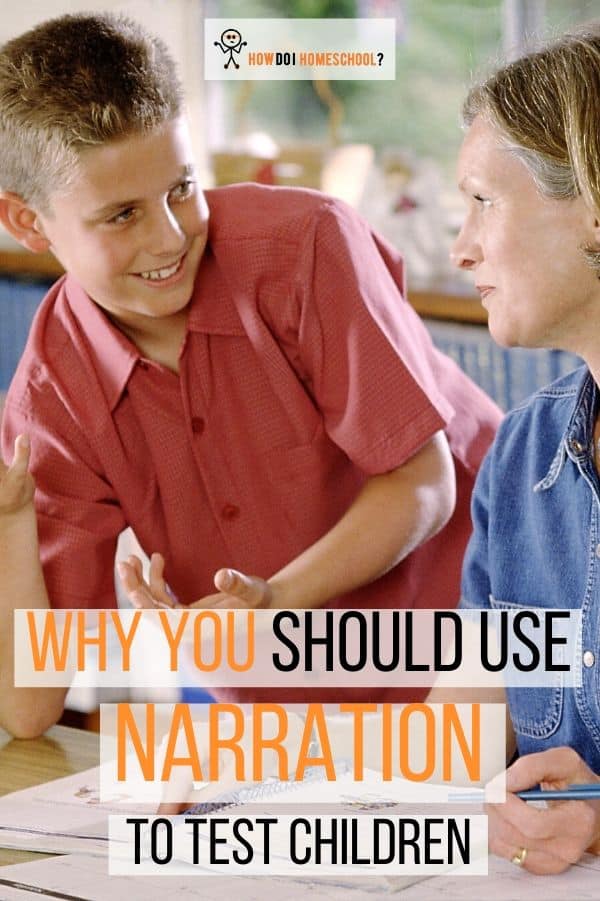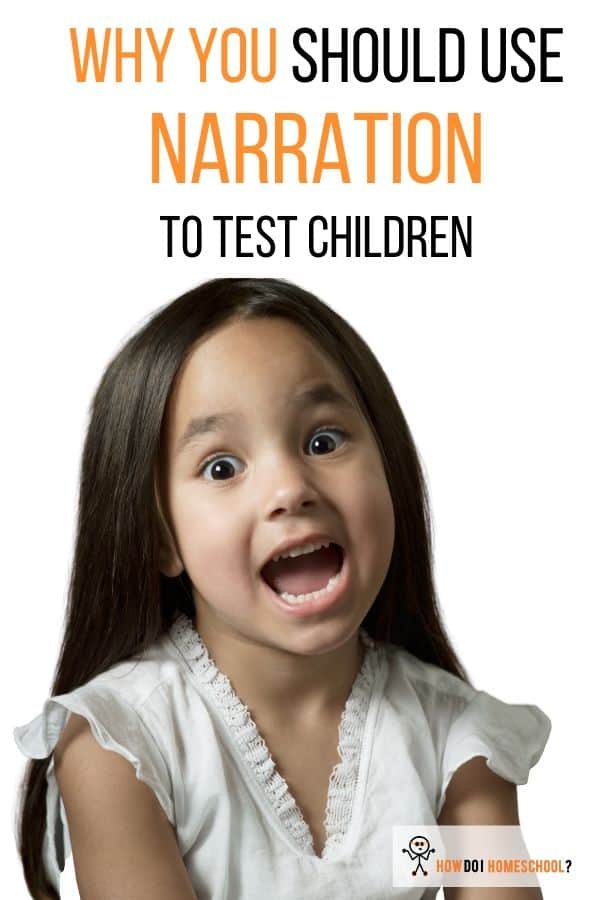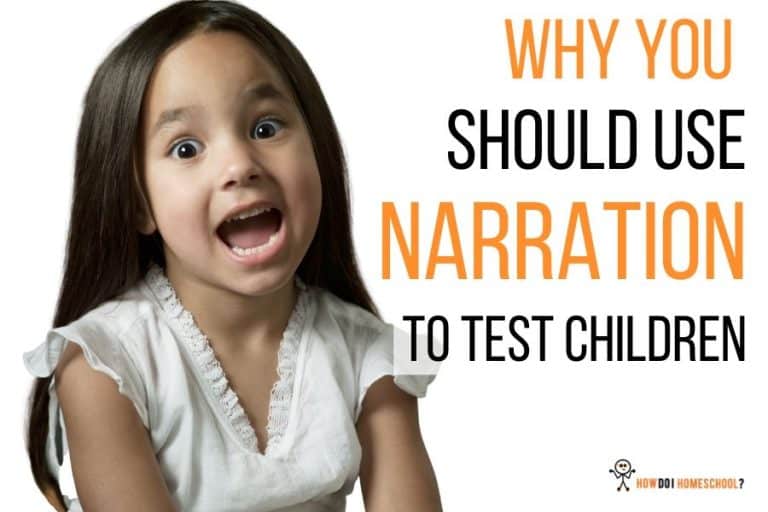Charlotte Mason narration is one of the best ways you can test children today. By using this examination method, parents can make the testing process fun and far less stressful. For this reason, I started researching narration ideas to use in my homeschool. This article will arm you with some fun narration ideas to use and incorporate it into your home education.
Charlotte Mason warned that children will be a little clunky when they begin narration. However, she assured us that, like public speaking, practice helps lubricate the nerve channels and students eventually become adept at answering these questions.

I hope you enjoy reading this blog post. If you want to do my course on how to homeschool, click here.
Narration prepares students for a lifetime where they will be required to give cogent answers to a variety of topics. By employing narration, you help your children be ready with well-thought-out answers they can deliver persuasively.

What is Narration?
What are the Benefits of Charlotte Mason Narration Testing?
Different Categories of Narration Ideas
The great thing about narration tests is that examinations aren’t always written. It can take many forms which are generally a lot more enjoyable than sitting a student down at their desk and handing them a piece of paper on which to write answers. Different narration ideas include:
- Speaking
- Writing
- Building (STEM or STEAM)
- Drawing
- Drama
I’ve heard of a few examples of teachers who have students who’ve panicked on a written test and received poor marks. The teachers, in these instances, knows the children have learned the work better than what the test says they do. In these instances, many teachers informally test students by asking them questions about the material after class and moderate their marks.
It seems that when mainstream testing methods go awry, some teachers use narration to test understanding.
What Are Some Narration Ideas?
What are some practical ways you can use this examination method? Some narration ideas (also called Charlotte Mason prompts) are getting your student to:
- repeat back to you the storyline of the passage you just read
- write about one of the characters they just heard about in the book you just read them (or they just read)
- make you a STEM model of the building you just read or heard about
- draw you a picture of the building they just learned about
- pretend to be a character you just read about, and you ask them questions about their life.
These prompts also force children to tell you what they’ve learned in a variety of ways. By doing so, they learn to think about the material from different perspectives, and thereby learn more and analyze the work in more detail.
What is a Narration Jar and How to Use It
A narration jar is a container that has slips of paper inside. These slips of paper contain different Charlotte Mason narration ideas (as outlined in the above section). Children can pick out these slips after they’ve finished their lesson and follow the instructions therein.
The child has to perform/act/write/build the idea that’s on the paper. This exciting variety can make narration incredibly enjoyable and children come to think of it like they’re playing masquerades!
If you’re feeling nice, you can even include a slip of paper that says, ‘Skip testing for today and have the time off!’
What are Charlotte Mason Narration Cards and How to Use Them
6 – 8:
- Create a puppet show based on the reading.
- Draw a scene from the reading and include a short caption.
- Tell 5 things you remember from the reading.
8 – 10:
- Write a song or poem inspired by the reading.
- Design a quiz based on the story.
- Compare and contrast two characters – you can make a Venn Diagram or make a chart. Why are they similar/different?
10+
- Write a movie script for a scene or event.
- Choose a character from the story and create a character sketch or map.
- Make an illustrated timeline.

What is a Narration Cube and How to Use It
- plot – the storyline; what happened in the story
- setting – where the story happened
- character – narrate what one of the characters was like
- compare – compare and contrast with another story, or make a parallel to your life
- theme – what’s the main point
- the heart – an open-ended question where you can share your favorite part or a bit that evoked emotion in you.
Requiring children to tell you these details means they’ll end up thinking about stories more closely.



